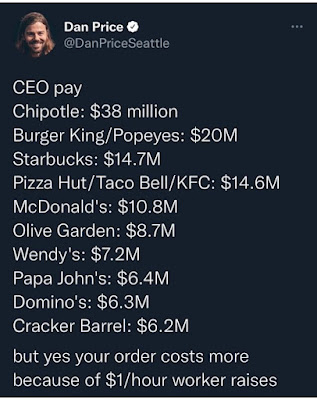Visit Milwaukee is claiming the Bucks Championship Had $58 Million Economic Impact.
That's possible. Anything is possible. But claims of such an impact are dubious at best.
As Roy Cordato's article noted:
Economic impact studies are everywhere.
Whether it’s to support a new highway project, special tax breaks for solar energy, the building of a civic center or sports complex, or to promote subsidies for Hollywood film producers, you can find an economic impact study, often touting how great the project will be for the state or local economy.
The formula is simple, predictable, and effective. A special interest group that stands to benefit from the project funds an economic impact study that purports to provide hard numbers on the number of jobs, the increase in wages, and the additional output that will be generated by the project or subsidy, and it will do this on an industry-by-industry basis. It makes grandiose claims about how much overall economic growth will be enhanced for the state or region generally. Once the report is completed, the special interest group that paid for the study will tout these results in press releases that will be picked up by the largely uncritical media establishment, ensuring that the political decision makers and others who determine the fate of the project receive political cover.
These studies all have several things in common. First, they typically use proprietary, off-the-shelf models with acronym names like IMPLAN (Impact Analysis for Planning), CUM (Capacity Utilization Model), or REMI (Regional Economic Model, Inc.). Rights to use the models are purchased by professional consulting firms who are hired by the interest groups to do the studies. Furthermore, seldom do those who actually perform the studies have formal training in economics. Instead their expertise is in using one or more of the aforementioned proprietary models. And finally, all of these studies ignore basic principles of economics and, as a result, do not meaningfully measure what they claim to be measuring—the economic impact of the public policies and projects that they are assessing.
One big problem with economic impact studies is the idea of substitution. If money that would have been spent elsewhere was simply spent on the Bucks, growth did not occur. Spending that would have occurred in one spot was merely spent in a different spot. The project (the development, the event, etc.) hasn't catalyzed growth. They haven't made an economic impact. They've merely realigned spending.
Now, this isn't to say all projects are unable to spur growth. But unless the impact study accounts for concepts like substitution and opportunity cost, it's mostly measuring the rewards that will go to primarily absentee owners.
Milwaukee Magazine had their own questions regarding the local economic impact of the Bucks championship run.
The sparkling, shiny, loud things (sports and entertainment events) often get attention, articles and praise. Yet, as far as being supposed economic catalysts, all too often, the economic benefits and impact are ephemeral to non-existent.
Maybe it's time we stop deluding ourselves in the belief that all activities and projects can be or need to be fun and exciting. Clean water, smooth roads, public transportation, quality schools, affordable housing and health care, and maintained infrastructure provide a better return on investment and generate much more growth than any stadium or convention center could ever hope to.





